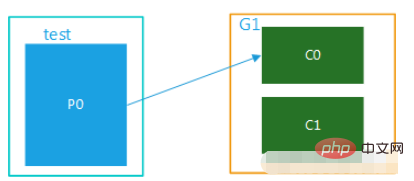 Java
Java javaTutorial
javaTutorial Five common types of Kafka partition strategies and analysis of their characteristics
Five common types of Kafka partition strategies and analysis of their characteristics
Five common types of Kafka partition strategies and their characteristics
Kafka partition strategy determines how messages are distributed across different partitions to achieve load balancing and high availability. Kafka supports five common partitioning strategies, which are:
- Round-robin : This is the simplest partitioning strategy, which evenly distributes messages to on all partitions. The advantage of this strategy is that it is simple and easy to use, but the disadvantage is that it may cause some partitions to be overloaded and other partitions to be underloaded.
- Random strategy (Random): This strategy randomly distributes messages to all partitions. The advantage of this strategy is that it can avoid the uneven load problem that may occur in the polling strategy, but the disadvantage is that it may cause some partitions to be overloaded and other partitions to be underloaded.
- Consistent Hashing Strategy : This strategy distributes messages to partitions so that messages with the same key are always distributed to the same partition. The advantage of this strategy is that it guarantees that messages with the same key are always stored on the same partition, but the disadvantage is that it may cause some partitions to be overloaded and other partitions to be underloaded.
- Key Partitioning strategy (Key Partitioning) : This strategy distributes messages to partitions so that messages with the same key are always distributed to the same partition. The advantage of this strategy is that it guarantees that messages with the same key are always stored on the same partition, but the disadvantage is that it may cause some partitions to be overloaded and other partitions to be underloaded.
- Range Partitioning Strategy (Range Partitioning): This strategy distributes messages to partitions so that messages with keys in the same range are always distributed to the same partition. The advantage of this strategy is that it guarantees that messages with the same range of keys are always stored on the same partition, but the disadvantage is that it may cause some partitions to be overloaded and other partitions to be underloaded.
Considerations for choosing a partitioning strategy
When choosing a partitioning strategy, you need to consider the following factors:
- Type of message:If the messages have the same key, you can use a consistent hashing strategy or a key partitioning strategy. If the messages do not have the same key, you can use a round-robin strategy or a random strategy.
- Number of partitions: The number of partitions should match the size of the cluster. If the number of partitions is too small, it may result in some partitions being overloaded and other partitions being underloaded. If there are too many partitions, it may cause excessive partition management overhead.
- Load balancing: The partitioning strategy should be able to achieve load balancing to avoid some partitions being overloaded and other partitions being underloaded.
- High availability: The partitioning strategy should be able to ensure high availability of messages to avoid message loss caused by partition failure.
Conclusion
Kafka partitioning strategy determines how messages are distributed across different partitions to achieve load balancing and high availability. Kafka supports five common partitioning strategies, namely polling strategy, random strategy, consistent hashing strategy, key partitioning strategy and range partitioning strategy. When choosing a partitioning strategy, you need to consider factors such as message type, number of partitions, load balancing, and high availability.
The above is the detailed content of Five common types of Kafka partition strategies and analysis of their characteristics. For more information, please follow other related articles on the PHP Chinese website!
 springboot+kafka中@KafkaListener动态指定多个topic怎么实现May 20, 2023 pm 08:58 PM
springboot+kafka中@KafkaListener动态指定多个topic怎么实现May 20, 2023 pm 08:58 PM说明本项目为springboot+kafak的整合项目,故其用了springboot中对kafak的消费注解@KafkaListener首先,application.properties中配置用逗号隔开的多个topic。方法:利用Spring的SpEl表达式,将topics配置为:@KafkaListener(topics=“#{’${topics}’.split(’,’)}”)运行程序,console打印的效果如下
 如何使用PHP和Kafka实现实时股票分析Jun 28, 2023 am 10:04 AM
如何使用PHP和Kafka实现实时股票分析Jun 28, 2023 am 10:04 AM随着互联网和科技的发展,数字化投资已成为人们越来越关注的话题。很多投资者不断探索和研究投资策略,希望能够获得更高的投资回报率。股票交易中,实时的股票分析对决策非常重要,其中使用Kafka实时消息队列和PHP技术实现更是一种高效且实用的手段。一、Kafka介绍Kafka是由LinkedIn公司开发的一个高吞吐量的分布式发布、订阅消息系统。Kafka的主要特点是
 SpringBoot怎么集成Kafka配置工具类May 12, 2023 pm 09:58 PM
SpringBoot怎么集成Kafka配置工具类May 12, 2023 pm 09:58 PMspring-kafka是基于java版的kafkaclient与spring的集成,提供了KafkaTemplate,封装了各种方法,方便操作,它封装了apache的kafka-client,不需要再导入client依赖org.springframework.kafkaspring-kafkaYML配置kafka:#bootstrap-servers:server1:9092,server2:9093#kafka开发地址,#生产者配置producer:#Kafka提供的序列化和反序列化类key
 kafka可视化工具对比分析:如何选择最合适的工具?Jan 05, 2024 pm 12:15 PM
kafka可视化工具对比分析:如何选择最合适的工具?Jan 05, 2024 pm 12:15 PM如何选择合适的Kafka可视化工具?五款工具对比分析引言:Kafka是一种高性能、高吞吐量的分布式消息队列系统,被广泛应用于大数据领域。随着Kafka的流行,越来越多的企业和开发者需要一个可视化工具来方便地监控和管理Kafka集群。本文将介绍五款常用的Kafka可视化工具,并对比它们的特点和功能,帮助读者选择适合自己需求的工具。一、KafkaManager
 如何利用React和Apache Kafka构建实时数据处理应用Sep 27, 2023 pm 02:25 PM
如何利用React和Apache Kafka构建实时数据处理应用Sep 27, 2023 pm 02:25 PM如何利用React和ApacheKafka构建实时数据处理应用引言:随着大数据与实时数据处理的兴起,构建实时数据处理应用成为了很多开发者的追求。React作为一个流行的前端框架,与ApacheKafka作为一个高性能的分布式消息传递系统的结合,可以帮助我们搭建实时数据处理应用。本文将介绍如何利用React和ApacheKafka构建实时数据处理应用,并
 go-zero与Kafka+Avro的实践:构建高性能的交互式数据处理系统Jun 23, 2023 am 09:04 AM
go-zero与Kafka+Avro的实践:构建高性能的交互式数据处理系统Jun 23, 2023 am 09:04 AM近年来,随着大数据的兴起和活跃的开源社区,越来越多的企业开始寻找高性能的交互式数据处理系统来满足日益增长的数据需求。在这场技术升级的浪潮中,go-zero和Kafka+Avro被越来越多的企业所关注和采用。go-zero是一款基于Golang语言开发的微服务框架,具有高性能、易用、易扩展、易维护等特点,旨在帮助企业快速构建高效的微服务应用系统。它的快速成长得
 springboot项目配置多个kafka的示例代码May 14, 2023 pm 12:28 PM
springboot项目配置多个kafka的示例代码May 14, 2023 pm 12:28 PM1.spring-kafkaorg.springframework.kafkaspring-kafka1.3.5.RELEASE2.配置文件相关信息kafka.bootstrap-servers=localhost:9092kafka.consumer.group.id=20230321#可以并发消费的线程数(通常与partition数量一致)kafka.consumer.concurrency=10kafka.consumer.enable.auto.commit=falsekafka.boo
 从面试角度一文学完 KafkaAug 24, 2023 pm 03:22 PM
从面试角度一文学完 KafkaAug 24, 2023 pm 03:22 PMKafka 是一个优秀的分布式消息中间件,许多系统中都会使用到 Kafka 来做消息通信。对分布式消息系统的了解和使用几乎成为一个后台开发人员必备的技能。


Hot AI Tools

Undresser.AI Undress
AI-powered app for creating realistic nude photos

AI Clothes Remover
Online AI tool for removing clothes from photos.

Undress AI Tool
Undress images for free

Clothoff.io
AI clothes remover

AI Hentai Generator
Generate AI Hentai for free.

Hot Article

Hot Tools

Safe Exam Browser
Safe Exam Browser is a secure browser environment for taking online exams securely. This software turns any computer into a secure workstation. It controls access to any utility and prevents students from using unauthorized resources.

ZendStudio 13.5.1 Mac
Powerful PHP integrated development environment

MinGW - Minimalist GNU for Windows
This project is in the process of being migrated to osdn.net/projects/mingw, you can continue to follow us there. MinGW: A native Windows port of the GNU Compiler Collection (GCC), freely distributable import libraries and header files for building native Windows applications; includes extensions to the MSVC runtime to support C99 functionality. All MinGW software can run on 64-bit Windows platforms.

SublimeText3 Chinese version
Chinese version, very easy to use

EditPlus Chinese cracked version
Small size, syntax highlighting, does not support code prompt function





